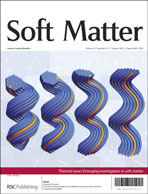In this work, we have performed explicit coarse-grained Monte Carlo simulations of thermo-responsive nanogels in salt-free solutions with the help of the bead-spring model of polyelectrolytes and a solvent-mediated hydrophobic interaction potential that captures the swelling behavior of real microgels. As far as we know, such simulations have not been applied to temperature-sensitive charged nanogels yet. Monovalent and divalent counterions have been considered. Charge profiles inside and outside the nanogel have been computed from simulations, revealing an attractive finding for the use of these nanoparticles as potential drug carriers: when charged nanogels collapse, they can sometimes form a hollow sphere, with the charged beads concentrated on the inner and outer surfaces, and some counterions enclosed in the inner space. Simulations also show that the surface electrostatic potential increases when nanogels shrink upon heating. However, the fraction of counterions inside these soft nanoparticles slightly varies with temperature. Charge profiles were also calculated using a Poisson–Boltzmann cell model. Its predictions about the charge profile outside the nanogel, the fraction of counterions inside and the surface electrostatic potential are in fair agreement with simulation data. This suggests that this model provides valuable information about the electric double layer of thermo-responsive nanogels.

You have access to this article
 Please wait while we load your content...
Something went wrong. Try again?
Please wait while we load your content...
Something went wrong. Try again?


 Please wait while we load your content...
Please wait while we load your content...